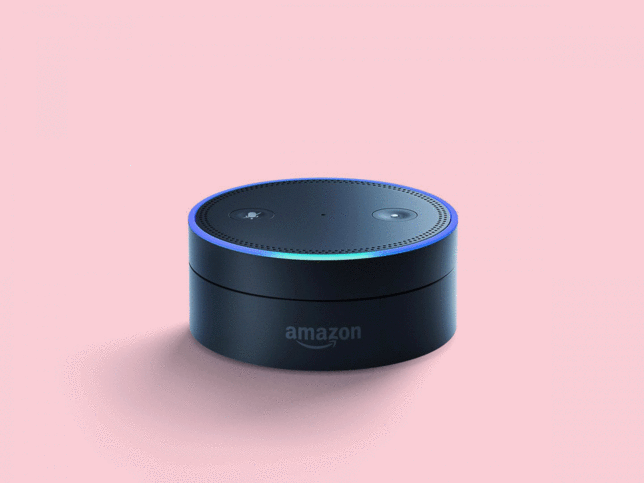The feminist movement has been gaining force in recent years. Following this new wave of feminism, almost every professional field has had to confront the challenges posed by feminist studies. In general, most disciplines are focusing on reviving the names of important women who have been silenced by history. In technical disciplines, moreover, attention is being drawn to how apparently objective solutions are also conditioned by the gender of the person who proposes them. What about design?
We designers love to think that design is a transformational element used to solve problems. We constantly observe our environment and human behavior, but of course, according to our biases, unfortunately. Therefore, it is not far-fetched to think that if we live in a world designed by white men, we will hardly address the problems of the vast majority of the population, i.e. not white men (fortunately).

A stronger feminist perspective in design has been developed in the last decades, but there are some much earlier pioneers in the field. In the 1920s, Lillian Gilbreth employed, albeit unknowingly, the concept of situated knowledge to improve the lives of millions of housewives. Although the term was not defined until the 1990s by Haraway, we can confirm that it was used by Lillian, herself a pioneer in this field. This university professor, industrial psychologist and mother of 12 children, made several proposals to improve American kitchens so that women could spend less time on domestic work and thus be able to get a job outside of the home and gain independence. To this end, she applied innovations that today we take for granted, but that were crucial at the moment: the addition of a pedal to the trash can, shelves in the refrigerator door to make frequently used products more handy, as well as the use of triangular space in kitchens: fridge – sink – stove. In addition, observing her own organization of a hectic house full of children while always doing care jobs led her to apply time management principles that are still studied in business schools.

Redefining normal
In this field, it is obvious that white men design everything from note pads and cars to refrigerators and rockets. As far as design itself is concerned, we can find multiple examples of gender bias. Did you know that safety belts in cars are less safe for women? In the sixties, when safety regulations were originally imposed on automakers, the use of crash test dummies was – you guessed it – based on a male public. Another example could be the continued increase of voices being raised around concepts such as feminist urbanism. Groups of urban planners assert the need to plan cities by prioritizing care tasks, associated with women, as opposed to the dominant linear commuting patterns of men. If someone has ever tried to use the subway with a baby carriage, they will know what we are talking about.

In the past, the lack of participatory design practices has often overlooked women’s needs, desires and preferences, and products have been developed from the point of view of problems associated with the male construct. Today, we have no more excuses.
“
We must constantly question the privileges of one group over another. If we want to move forward towards a more global and diverse society
Digital matters
The examples we described above in the physical world can also be extrapolated to the digital world. There is a big discussion about the bias of algorithms (AI) but not so much about the people who develop them. There are hilarious examples about what women are supposedly like and other biases that are a little more dangerous. A recent survey conducted by Invision of over 1,650 designers from 65 countries reveals that, although the data is changing gradually and some specific fields are majority female, it is still men who dominate the sector and therefore continue to design the world according to their perspective. Why do our mothers have a harder time with technology than our fathers? Why are women more technophobic and feel more computer-related anxiety? Because that technology was not designed with their cognition in mind. It is still considered a “toy for the boys”. It was just assumed that women were not as computer-oriented as men. Design Research is contributing to changing these patterns, little by little.
Regarding the reality of the internet, there is an imbalance between who designs the internet and who uses it. For example, according to a recent report by the AI Now initiative, only 18% of authors at major AI conferences are women, more than 80% of AI professors are men and only 2.5% of Google’s workforce are black workers, while Facebook and Microsoft are at 4%. There is no data on transgender workers in these types of AI companies.
Voice assistants, the most recent trend in User Experience Design, are (except when they are lawyers or have other powerful roles) a shocking confirmation of how deep-seeded the patriarchy really is. Interesting experiments are being carried out by Feminist Internet, a collective that wants to make the internet a more equal space for women and other marginalized groups through creative and critical practice. F’xa, a chatbot designed by them, provides the general public with a playful guide to AI bias. They have also created a student bootcamp that was set up to design and develop a feminist Alexa from which some very interesting ideas emerged.

Women in blockchain
Blockchain also has a gender problem. Gender disparity is well documented in the tech sector, as well as in FLOSS. Blockchain represents an even worse case of this well-known trend, where only 23% of jobs are held by women according to a study we conducted on European initiatives at DLT for Social Good. We usually focus on technical positions, but it must be emphasized that all positions are important, especially when talking about gender perspectives. Management, design and communication roles tend to be occupied more commonly by women, and without all these tasks, the technical part would not even be possible. So it all adds up! Let’s stop overvaluing technical skills and look more at the overall picture.
If we focus on how the blockchain works from a gender perspective, we need to reflect not only on the number of men versus women in DAOs, but also on how DAOs are designed to exclude those who have to spend time cleaning the bathroom and cooking dinner while others have all the time in the world to vote on every mundane proposal that comes their way.
Conclusion
It could be said that design has the power to change how we think and rewire our brains to form new habits, and this may one day eradicate discrimination and gender roles. For now, however, it is a global responsibility to think in a more inclusive way, incorporating gender perspectives into our designs and building more equal teams. After all, design is about solving people’s problems and making life easier for them, so we need to think about solutions in a more inclusive way so that more than half of the population is not left out. From a design point of view, we must constantly question the privileges of one group over another. If we want to move forward towards a more global and diverse society, we must expand these questions to include diverse gender groups, ethnic minorities, the economically underprivileged, the specially-abled and so on.
AUTHOR

The authorship is by Elena Martínez, but this content has been made thanks to the whole P2P Models team ![]()
The designs are also by Elena Martinez
The review by Genoveva López and Guerrilla Translation
Rosa Chamorro and Samer Hassan make everything possible





